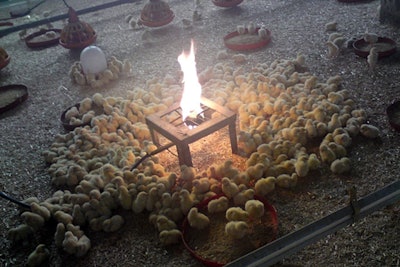
In poultry, an important source of protein throughout the world, Salmonellosis continues to cause economic losses, particularly in those parts of the world where poultry industries are continuing to intensify and where open-sided housing is common. Salmonellae are responsible for considerable losses in the global poultry industry through the death of birds and loss in production.
Avian Salmonellosis is an inclusive term designating a large group of acute and chronic diseases of poultry caused by any one or more members of genus Salmonella under the family Enterobacteriaceae. Salmonella infections are considered to be the most important disease affecting poultry, as the disease causes severe damage among young birds with a high mortality rate. Adult birds are often chronic carriers of Salmonella organisms without outward signs.
As per the above important concepts and reasons, a study was conducted to survey and check the present status of Salmonella infection in broiler flocks using the following steps:
- Isolation and identification of Salmonellae from broiler flocks
-
Characterization of the isolates using:
- Biochemical tests
- Serological identification using slide agglutination test
A total of 482 samples (liver, intestine, spleen, heart and yolk sac) were collected from moribund broiler chickens showing diarrhea and respiratory distress. The birds were of different ages ranging from one to 42 days old, reared in deep litter under open and closed systems. The environmental conditions (temperature, air and relative humidity) were controlled manually in the open system. Environmental conditions were automatically controlled and adjusted in the closed system. We found that the prevalence of Salmonella species in the broiler flocks was 10.37 percent among three governorates in Egypt (Al-Qalyubia, El-Ismailia and El-Gharbia). The highest incidence of Salmonella was recorded in El-Gharbia, followed by El-Ismailia and then AL-Qalyubia.

A closed-system poultry farm.
Detailed results from the study can be found in the following tables:

Salmonellae were isolated from intestine (17.39 percent), yolk sac (13.64 percent), heart (11.3 percent), liver (7.83 percent) and spleen (4.35 percent).
The highest incidence of Salmonellae was recorded in the fifth week of age (20.24 percent), followed by the first week (11.11 percent), fourth week (10 percent), second week (9.21 percent), sixth week (5.88 percent) and the third week (2.9 percent).
By using polyvalent and monovalent Salmonella O and H antisera, Salmonella isolates were serotyped as: Salmonella enteritidis (56 percent), Salmonella Kentucky (16 percent), Salmonella Newport (12 percent), Salmonella Derby and Salmonella Typhimurium (4 percent each), and Salmonella infantis (2 percent).
It was concluded that Salmonella infection is still prevalent in poultry farms in Egypt. The present study indicated the presence of serotype variations of the Salmonella organism in Egypt and isolated from different organs, on different ages, from either open- or closed-house system.
Co-authors: Sahar Ahmed Zou El-Fakar, Youssef Ibrahim Youssef, Jakeen.El-Jakee
References furnished upon request.















